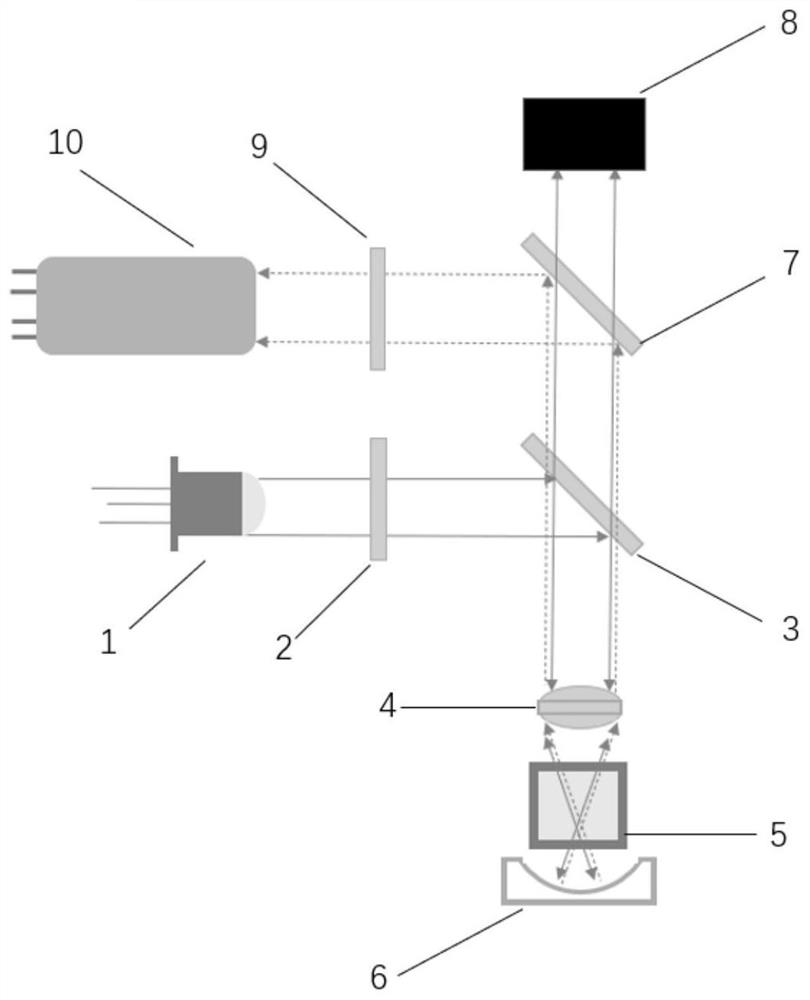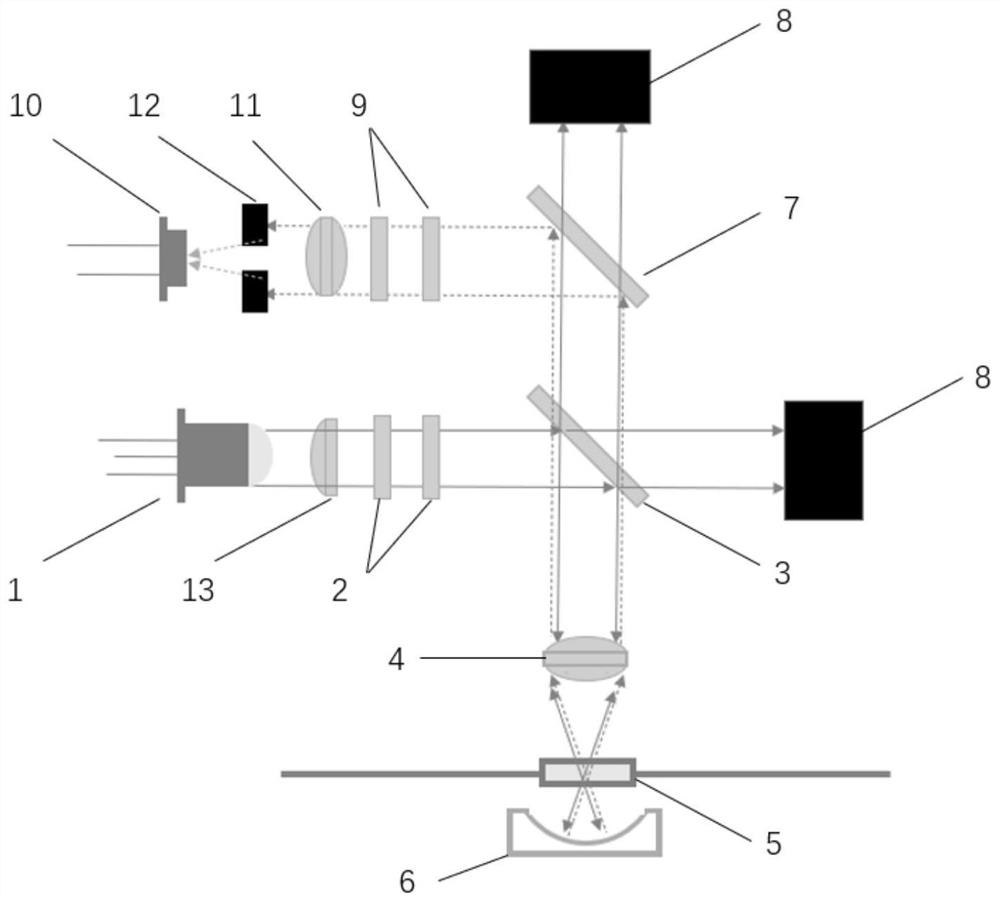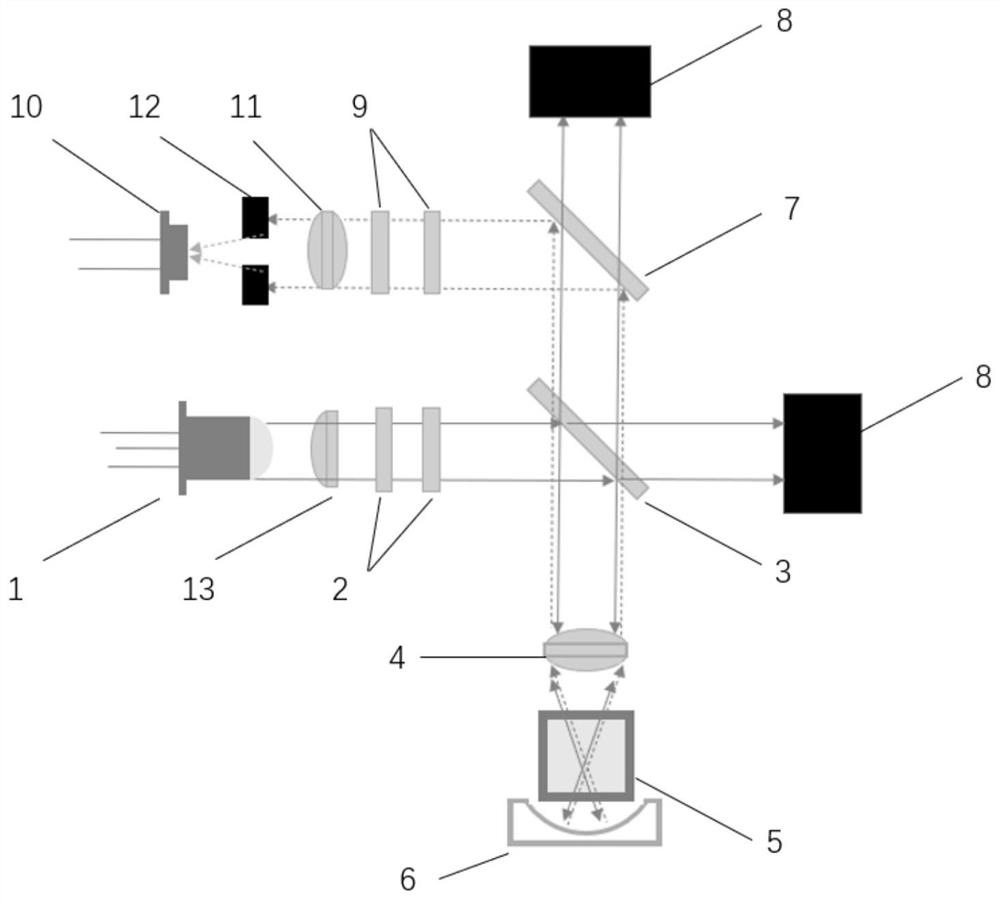Fluorescence detector
A fluorescence detector and photodetector technology, applied in the field of fluorescence detectors, can solve problems such as insufficient sensitivity improvement, unfavorable influence of signal-to-noise ratio, loss of excitation light, etc., to reduce the level of background stray light and detect signal-to-noise ratio. Improve and improve the effect of detection signal-to-noise ratio
- Summary
- Abstract
- Description
- Claims
- Application Information
AI Technical Summary
Problems solved by technology
Method used
Image
Examples
Embodiment 1
[0044] like figure 1 As shown, a fluorescence detector consists of an excitation light source 1, an excitation filter 2, a first dichroic mirror 3, a first converging lens 4, a detection cell 5, a curved mirror 6, and a second dichroic mirror 7 , a light trap 8, an emission filter 9 and a photodetector 10. The excitation light path of the fluorescence detector and the fluorescence emission light path form 180° with each other; the excitation light path is sequentially provided with an excitation light source 1, an excitation filter 2 and a first dichroic mirror 3, wherein the excitation light source 1 selects the central wavelength is a light-emitting diode of 365nm, its half-peak width is 15nm, and the divergence angle is 10°; the central wavelength of the excitation filter 2 is 365nm, and the bandwidth is 70nm; the first dichroic mirror 3 can reflect the excitation light and transmit Fluorescence and the angle between the excitation light path is 45°, the transmission band:...
Embodiment 2
[0049] like figure 2 As shown, what is different from Embodiment 1 is that in this embodiment, the photodetector 10 is a photodiode, and the number of excitation filters 2 and emission filters 9 are both 2. A diaphragm 12 and a second converging lens 11 are arranged between the photodetectors 10, the diaphragm 12 is close to one end of the photodetector 10, and the aperture is 2.5 mm; There is a third converging lens 13; the detection pool 5 is a post-column detection pool, which is a quartz tube with an inner diameter of 2 mm, an outer diameter of 4 mm and a length of 7 mm; the optical trap 8 is provided with two, one is located in the first dichroic mirror 3 On the rear side, the excitation light passing through the first dichroic mirror 3 is vertically irradiated on it; the other is located on the rear side of the second dichroic mirror 7, and the excitation light and stray light passing through the second dichroic mirror 7 are vertically irradiated Above, the two light t...
Embodiment 3
[0055] like image 3 As shown, the difference from Embodiment 2 is that in this embodiment, the detection cell 5 is a cuvette detection cell; the photodetector 10 is a charge-coupled element.
PUM
| Property | Measurement | Unit |
|---|---|---|
| wavelength | aaaaa | aaaaa |
| radius | aaaaa | aaaaa |
| length | aaaaa | aaaaa |
Abstract
Description
Claims
Application Information
 Login to View More
Login to View More - R&D Engineer
- R&D Manager
- IP Professional
- Industry Leading Data Capabilities
- Powerful AI technology
- Patent DNA Extraction
Browse by: Latest US Patents, China's latest patents, Technical Efficacy Thesaurus, Application Domain, Technology Topic, Popular Technical Reports.
© 2024 PatSnap. All rights reserved.Legal|Privacy policy|Modern Slavery Act Transparency Statement|Sitemap|About US| Contact US: help@patsnap.com










